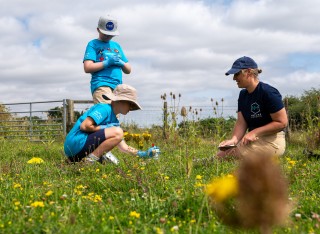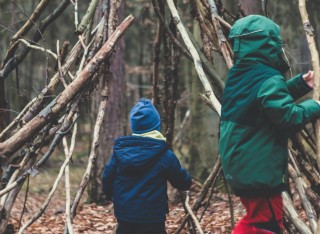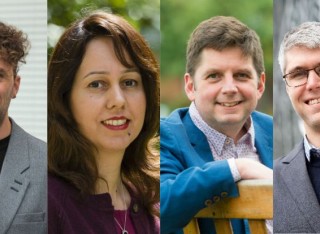
Dr Matteo Giusti
Academic and research departments
Centre for Environment and Sustainability, Institute for Sustainability.About
Biography
Matteo is a Future Fellow in Sustainability Science at the University of Surrey. He investigates individual, spatial, and social processes leading to sustainable human-nature relationships.
Matteo is driven by research questions that have transformative potential. How can we nurture our relationship with nature to drive a sustainable transformation? How can the green and blue infrastructure contribute to our relationship with nature? How are values, expectations, or traditions (in)compatible with (un)sustainable human progress?
His research is transdisciplinary and solution-oriented, blending sustainability science, systems thinking, environmental psychology, social science and spatial analysis in multi-method studies. He collaborates with artists, educational organizations, architecture firms, and innovation agencies to put his research into practical use.
Areas of specialism
News
In the media
Teaching
Since 2017, I have taught different aspects of Sustainability Science in various guest lectures. In 2018 and 2019 I contributed to the conceptualization, design, and structure of the first distance-learning Master's program in Sustainability Science titled “Environment and Decision Making” at the University of Gävle in Sweden. The MSc program has been active since 2021.
I have independently developed, lectured, and examined the courses “Sustainability Science and Systems Theory” (2021, 2022) and “Natural Resource Management and Resilience Building of Social-ecological Systems” (2021).
Sustainable development goals
My research interests are related to the following:

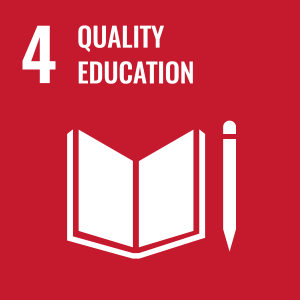

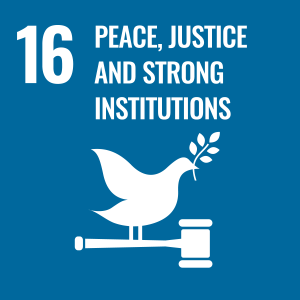
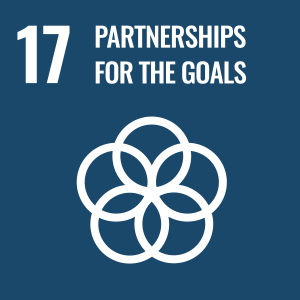
Publications
Discover a transformative journey that rekindles your connection with the natural world. BeNature! blends cutting-edge research in sustainability science with profound hands-on expertise to create a unique guide for fostering meaningful relationships with nature. Designed for teachers, parents, and nature enthusiasts, the guide defines practical steps to learn how to embrace, protect, and celebrate the environment around you. The guide suggests a progression of milestones to build meaningful relationships with nature little by little. From feeling at ease in nature to ecological leadership, the progression is tailored to various ages and skill levels. In the second half, we delineate a toolkit that offers a variety of methods to make existing nature activities more meaningful or to evaluate their impact on people’s connection with nature, personal growth, and well-being.Whether seeking personal growth, planning family adventures, or leading educational programs, BeNature! is a practical guide to perform, enrich, and evaluate your efforts. Join a global movement of individuals to leave an ecological legacy. Learn how to identify, perceive, and treasure the value that nature brings to our everyday lives. Join BeNature! on a journey that inspires you to reconnect and find balance with the natural world.
•We analysed 15 months of GPS-derived travel trajectories and geolocated experiences.•Urban, suburban, and peripheral dwellers all reported the same types of experiences.•Trips are typically 1.5–5 km, but active travel predominately occurs up to 1.5 km.•Urban dwellers often use motorised travel to reach nature experience locations.•Spatial planning should focus on environmental diversity and biking infrastructure. Two key goals for sustainable spatial planning are to promote low-carbon travel in daily life and to enhance human wellbeing through diverse human-environment interactions. Yet, the integration of these goals has been underexplored. This study investigates the potential for experiential diversity via active travel in different residential contexts within the Gävle city-region, Sweden. Over 15 months, we collected spatiotemporal data from 165 participants, analyzing 4,362 reported experiences and 13,192 GPS-derived travel trajectories. Our analysis uncovered a significant spatial discrepancy: while the travelled distances to locations of positive experiences typically ranged from 1.5 km to 5 km, active travel predominated only within 1.5 km. This discrepancy persisted across urban, suburban, and peripheral contexts. Although residents in different contexts reported the same types of experiences, urban dwellers travelled about 50 % farther for nature experiences compared with other positive experiences, whereas peripheral dwellers travelled twice the distance for urbanicity experiences compared with other positive experiences. Consequently, urban residents mostly relied on active travel for urbanicity experiences and motorised travel for nature experiences, with the reverse trend observed among peripheral dwellers. These results illustrate the importance of spatial scale for promoting diverse positive experiences via active travel, regardless of residential context. Effective planning strategies may include enhancing environmental diversity near homes and developing infrastructure that favours active over motorised travel for short to moderate distances. [Display omitted]
What relationship with nature shapes children's desire to protect the environment? This study crosses conventional disciplinary boundaries to explore this question. I use qualitative and quantitative methods to analyse experiential, psychological, and contextual dimensions of Human-Nature Connection (HNC) before and after children participate in a project of nature conservation. The results from the interviews (N = 25) suggest that experiential aspects of saving animals enhance children's appreciation and understanding for animals, nature, and nature conservation. However, the analysis of children's psychological HNC (N = 158) shows no statistical difference before and after children participate in the project. Analysing the third dimension-children's contextual HNC-provides further insights. Including children's contextual relations with home, nature, and city, not only improves the prediction of their desire to work for nature, but also exposes a form of Human-Nature Disconnection (HND) shaped by children's closeness to cities that negatively influence it. Overall, combining experiential, psychological, and contextual dimensions of HNC provides rich insights to advance the conceptualisation and assessment of human-nature relationships. People's relationship with nature is better conceived and analysed as systems of relations between mind, body, culture, and environment, which progress through complex dynamics. Future assessments of HNC and HND would benefit from short-term qualitative and longterm quantitative evaluations that explicitly acknowledge their spatial and cultural contexts. This approach would offer novel and valuable insights to promote the psychological and social determinants of resilient sustainable society.
[Display omitted] •Spatial modelling of place use and wellbeing in Sweden during COVID-19.•Easy access to natural settings supports wellbeing under “soft-touch” restrictions.•No evidence for a link between population density of visited places and wellbeing.•Equitable access to natural settings can increase urban resilience towards pandemics.•Strategies can synergize with climate change mitigation and biodiversity protection. The coronavirus pandemic entailed varying restrictions on access, movement and social behavior in populations around the world. Knowledge about how people coped with “soft-touch” restrictions can inform urban spatial planning strategies that enhance resilience against future pandemics. We analyzed data from an online place-based survey on 2845 places across Sweden that respondents abstained from visiting, visited with similar frequency, or visited more frequently in spring 2020 as compared to before the pandemic. In spatial logistic regression models, we relate geographical and sociodemographic properties of places (fields, forests, water, residential population density and daytime population density) to self-perceived changes in wellbeing from visiting the given place less or more often, respectively. Abstaining from visiting places with natural features located in areas of high residential density was associated with a self-perceived negative influence on wellbeing. Yet, fields, forests and water were strongly associated with places people claimed wellbeing benefits from during pandemic restrictions. The further a visited place was from the respondent’s home, the more likely it was to have a positive wellbeing influence. As an illustrative case, we map our models onto the landscape of Stockholm, showing that some neighborhoods are likely more resilient than others when coping with pandemic restrictions. Both the most and least resilient neighborhoods span the socio-economic spectrum. Urban planning will do well to enable equitable, easy access to natural settings by foot or bike, to increase pandemic preparedness as well as support climate change mitigation and biodiversity protection.
Habits are the fundamental basis for many of our daily actions and can be powerful barriers to behavioural change. Still, habits are not included in most narratives, theories, and interventions applied to sustainable behaviour. One reason societies struggle to reach policy goals and people fail to change towards more pro-environmental lifestyles might be that many behaviours are now bound by strong habits that override knowledge and intentions to act. In this perspective article, we provide three arguments for why pro-environmental habits are a needed research agenda in sustainability science: (1) habit theory highlights how behaviour is heavily reliant on automatic processes, (2) the environmental context sets boundary conditions for behaviour, shape habits, and cues action responses, and (3) our habits and past behaviour shape our values and self-identity. These arguments highlight the transformative potential of looking at sustainable behaviours through a habit lens. We believe a research agenda on pro-environmental habits could generate a more holistic understanding of sustainable behaviours and complement today’s dominating approaches which emphasize reasoned decisions and intrinsic motivations such as values, norms, and intentions to understand and predict pro-environmental behaviour. We highlight evident knowledge gaps and practical benefits of considering habit theory to promote pro-environmental behaviours, and how habit architecture could be utilized as a strong leverage point when designing, modifying, and building urban environments.
The aim of this paper is to explore how children learn to form new relationships with nature. It draws on a longitudinal case study of children participating in a stewardship project involving the conservation of salamanders during the school day in Stockholm, Sweden. The qualitative method includes two waves of data collection: when a group of 10-year-old children participated in the project (2015) and 2 years after they participated (2017). We conducted 49 interviews with children as well as using participant observations and questionnaires. We found indications that children developed sympathy for salamanders and increased concern and care for nature, and that such relationships persisted 2 years after participation. Our rich qualitative data suggest that whole situations of sufficient unpredictability triggering free exploration of the area, direct sensory contact and significant experiences of interacting with a species were important for children's development of affective relationships with the salamander species and with nature in an open-ended sense. Saving the lives of trapped animals enabled direct sensory interaction, feedback, increased understanding, and development of new skills for dynamically exploring further ways of saving species in an interactive process experienced as deeply meaningful, enjoyable and connecting. The behavioral setting instilled a sense of pride and commitment, and the high degree of responsibility given to the children while exploring the habitat during authentic situations enriched children's enjoyment. The study has implications for the design of education programs that aim to connect children with nature and for a child-sensitive urban policy that supports authentic nature situations in close spatial proximity to preschools and schools.
•Supporting human wellbeing while limiting negative impacts on the biosphere entails contradictions for urban development.•We present a novel method for studying influence of environment on people’s experiences.•Probabilities of positive and negative experiences in places are estimated across Stockholm.•Residential density and closeness to water or nature have statistically significant albeit weak effects.•Workplace density, closeness to major roads and natural temperature regulation have large effects. In order to construct urban environments that limit negative impacts for global sustainability while supporting human wellbeing, there is a need to better understand how features of the environment influence people’s everyday experiences. We present a novel method for studying this combining accessibility analysis and public participatory GIS (PPGIS). Seven environment features are defined and accessibility to them analysed across Stockholm municipality. We estimate the probabilities of positive and negative experiences in places based on these environment features, by using spatial regression to extrapolate from the results of an online PPGIS survey (1784 experiences of 1032 respondents). Six of the seven studied environment features have significant impact on experiential outcome, after accounting for spatial autocorrelation among the data. The results show that number of residents and proximity of nature environments and water, all common quality indicators in urban planning and research, have weak statistically significant effects on people’s experiences. However, areas dominated by large working populations or proximity to major roads have very low rates of positive experiences, while areas with high natural temperature regulating capacities have very high rates, showing that there are considerable qualitative differences within urban environments as well as nature environments. Current urban planning practices need to acknowledge these differences to limit impacts on the biosphere while promoting human wellbeing. We suggest that a good way to start addressing this is through transformation of negatively experienced urban areas through designs that integrate closeness to urbanity with possibilities to have nature experiences on a daily basis.
The establishment of interdisciplinary Master's and PhD programs in sustainability science is opening up an exciting arena filled with opportunities for early-career scholars to address pressing sustainability challenges. However, embarking upon an interdisciplinary endeavor as an early-career scholar poses a unique set of challenges: to develop an individual scientific identity and a strong and specific methodological skill-set, while at the same time gaining the ability to understand and communicate between different epistemologies. Here, we explore the challenges and opportunities that emerge from a new kind of interdisciplinary journey, which we describe as 'undisciplinary.' Undisciplinary describes (1) the space or condition of early-career researchers with early interdisciplinary backgrounds, (2) the process of the journey, and (3) the orientation which aids scholars to address the complex nature of today's sustainability challenges. The undisciplinary journey is an iterative and reflexive process of balancing methodological groundedness and epistemological agility to engage in rigorous sustainability science. The paper draws upon insights from a collective journey of broad discussion, reflection, and learning, including a survey on educational backgrounds of different generations of sustainability scholars, participatory forum theater, and a panel discussion at the Resilience 2014 conference (Montpellier, France). Based on the results from this diversity of methods, we suggest that there is now a new and distinct generation of sustainability scholars that start their careers with interdisciplinary training, as opposed to only engaging in interdisciplinary research once strong disciplinary foundations have been built. We further identify methodological groundedness and epistemological agility as guiding competencies to become capable sustainability scientists and discuss the implications of an undisciplinary journey in the current institutional context of universities and research centers. In this paper, we propose a simple framework to help early-career sustainability scholars and well-established scientists successfully navigate what can sometimes be an uncomfortable space in education and research, with the ultimate aim of producing and engaging in rigorous and impactful sustainability science.
Despite arguments justifying the need to consider how cultural ecosystem services are coproduced by humans and nature, there are currently few approaches for explaining the relationships between humans and ecosystems through embodied scientific realism. This realism recognises that human-environment connections are not solely produced in the mind, but through relations between mind, body, culture and environment through time. Using affordance theory as our guide, we compare and contrast embodied approaches to common understandings of the co-production of cultural ecosystem services across three assumptions: (1) perspective on cognition; (2) the position of socio-cultural processes and (3) typologies used to understand and value human-environment relationships. To support a deeper understanding of co-production, we encourage a shift towards embodied ecosystems for assessing the dynamic relations between mind, body, culture and environment. We discuss some of the advantages and limitations of this approach and conclude with directions for future research.
The design of the green infrastructure in urban areas largely ignores how people's relation to nature, or human-nature connection (HNC), can be nurtured. One practical reason for this is the lack of a framework to guide the assessment of where people, and more importantly children, experience significant nature situations and establish nature routines. This paper develops such a framework. We employed a mixed-method approach to understand what qualities of nature situations connect children to nature (RQ1), what constitutes children's HNC (RQ2), and how significant nature situations and children's HNC relate to each other over time (RQ3). We first interviewed professionals in the field of connecting children to nature (N = 26), performed inductive thematic analysis of these interviews, and then further examined the inductive findings by surveying specialists (N = 275). We identified 16 qualities of significant nature situations (e.g., "awe," "engagement of senses," "involvement ofmentors") and 10 abilities that constitute children's HNC (e. g., "feeling comfortable in natural spaces," " feeling attached to natural spaces," "taking care of nature"). We elaborated three principles to answer our research questions: (1) significant nature situations are various and with differing consequences for children's HNC; (2) children's HNC is a complex embodied ability; (3) children's HNC progresses over time through diverse nature routines. Together, these findings form the Assessment framework for Children's Human Nature Situations (ACHUNAS). ACHUNAS is a comprehensive framework that outlines what to quantify or qualify when assessing " child-nature connecting" environments. It guides the assessment of where and how children connect to nature, stimulating both the design of nature-connecting human habitats as well as pedagogical approaches to HNC.
This study presents MyGävle, a smartphone application that merge long-term tracking of mobility data, heart rate variability and subjective and objective well-being records. Developed to address the challenges faced in researching healthy and sustainable lifestyles, this app serves as a pioneering implementation of Real-life Long-term Methodology (ReaLM). After eight months' use by 257 participants from Gävle (Sweden), we evaluate the completeness, accuracy, validity, and consistency of all data collected. MyGävle produced remarkable results as a ReaLM method. On average, it precisely tracked participants daily locations for approximately 8 h and accurately collected heart-rate variability values throughout the day (12 h) and night (6 h). Participants reported 5115 subjective place experiences (ranging from 160 to 120 per week) and seasonal participation, although declining, is accurate. Our findings indicate that the amount of data collected through smartphone sensors, fitness wristbands and in-app questionnaires is consistent enough to be leveraged for integrated assessments of habits, environmental exposure, and subjective and physiological well-being. Yet, considerable variation exists across individuals; thus diagnostic analysis must precede use of these datasets in any particular research endeavors. By doing so we can maximise the potential of ReaLM research to delve into real life conditions conducive to healthy living habits while also considering broader sustainability goals.
Recent empirical research has confirmed the importance of green infrastructure and outdoor recreation to urban people's well-being during the COVID-19 pandemic. However, only a few studies provide cross-city analyses. We analyse outdoor recreation behaviour across four Nordic cities ranging from metropolitan areas to a middle-sized city. We collected map-based survey data from residents (n = 469-4992) in spring 2020 and spatially analyse green infrastructure near mapped outdoor recreation sites and respondents' places of residence. Our statistical examination reveals how the interplay among access to green infrastructure across cities and at respondents' residential location, together with respondents' socio-demographic profiles and lockdown policies or pandemic restrictions, affects outdoor recreation behaviour. The results highlight that for pandemic resilience, the history of Nordic spatial planning is important. To support well-being in exceptional situations as well as in the long term, green infrastructure planning should prioritise nature wedges in and close to cities and support small-scale green infrastructure.
Urban nature is and will be the most common provider of nature interactions for humankind. The restorative benefits of nature exposure are renown and creating human habitats that simultaneously support people's wellbeing and ecological sustainability is an urgent priority. In this study, we investigate how the relationship between environmental attitudes and healthy ecosystems influences restorative experiences combining a place-based online survey with geographical data on ecosystem health in Stockholm (Sweden). Using spatial regression, we predict the 544 restorative experiences (from 325 respondents), with people's environmental attitudes, natural land covers, ecosystem health, and the statistical interactions among these variables as predictors. Our results show that restorative experiences can happen anywhere in the urban landscape, but when they occur in natural environments, the combined levels of biodiversity and ecological connectivity are better predicting factor than the mere presence of nature. That is, healthy ecosystems seem to be more important than just any nature for restorative experiences. Moreover, the statistical interaction between one's environmental attitudes and natural environments predict almost all restorative experiences better than when these variables are independent predictors. This suggests that there is synergistic compatibility between environmental attitudes and healthy ecosystems that triggers restorative processes. We call this synergy regenerative compatibility. Regenerative compatibility is an unexploited potential that emerges when people's attitudes and ecosystems are aligned in sustainability. We consider regenerative compatibility a valuable leverage point to transform towards ecologically sustainable and healthy urban systems. To this end, we encourage multifaceted policy interventions that regenerate human-nature relationships holistically rather than implement atomistic solutions.
Post-industrial societies impose new ecological challenges on urbanism. However, it is argued here that most approaches to sustainable urbanism still share the conception of the humans-environment relations that characterized modernism. The paper finds support in recent knowledge developments in social-ecological sustainability, spatial analysis and cognitive science to initiate a dialogue for an alternative framework. Urban form engages humans not only through physical activities, but also mentally through opportunities for learning and creation of meaning, thereby both reinforcing and impeding behaviours on a cognitive level. Against this background, it is proposed that what in cognition studies is termed 'cognitive affordances' could form the core of a new epistemological framework of the human-environment relation in sustainable urbanism.
We reply to 'A relational turn for sustainability science?' by West et al. We commend West et al. for their salient comments about the relational turn. Yet the article leaves us wondering about the methodological challenges and pragmatics of relational thinking. The authors omitted important tensions in relational thinking discussion about how to assess dynamic socio-ecological systems, and how to lever change for sustainability. Whilst relational thinking is helpful, researchers inevitably need to make strategic choices about where to divide system components if the goal is to systematically assess relations and to promote transformations toward sustainability. Where and how to 'apply the knife' inevitably is informed by one's ontological starting point (view of reality) and personal epistemological beliefs. We outline three questions to be answered in order to more firmly establish relational thinking in sustainability science: If systems and processes are continually unfolding, how do we identify where to lever change for sustainability? In relational thinking, can we explain human action outside of the shared 'activity of experiencing'? If society and ecology is co-constituted, how can relational approaches be used to understand unfolding and cascading effects in complex systems? We conclude with future directions for a solutions-oriented sustainability science agenda.
The design of the human habitat can either promote or oppose healthy living, sustainable lifestyles, and the ability to value nature in people. The goal of this paper is to provide some insights to shape a transdisciplinary agenda for future human habitats that are socially and ecologically sustainable. This is what Connecting Land is. Through a planned workshop, 19 professionals from a variety of complementary backgrounds create a vision for Connecting Land and then discuss policy actions required to achieve such a vision. The produced vision highlights a physically and emotionally healthy community that celebrates local nature in their traditions and rituals. Nature experiences are next door and symbiosis with nature is the constant background of the inhabitants' habits. The policy actions emerging from the workshop suggest that achieving Connecting Land requires integrated policies that simultaneously address children's experience-based education, the elimination of physical barriers to nature access, and legal actions to establish the rights of natural elements. To this goal, synergies between the design of natural landscapes, children's education, and short and long-term people's wellbeing are worth further exploration in both academia and practice. Sustainable human habitats that promote a healthy and sustainable culture do not need to be utopian.
Air travel accounts for a major share of individual greenhouse gas emissions, particularly for people in high-income countries. Until recently, few have reduced flying because of climate concerns, but currently, a movement for staying on the ground is rising. Sweden has been a focal point for this movement, particularly during 2018-2019, when a flight tax was introduced, and air travel reduction was intensely discussed in the media. We performed semi-structured interviews with Swedish residents, focusing primarily on individuals who have reduced flying because of its climate impact. We explore how such individual transformation of air travel behavior comes about, and the phases and components of this process. Applying a framework of sustainability transformation, we identify incentives and barriers in personal and political spheres. We show that internalized knowledge about climate change and the impact of air travel is crucial for instigating behavioral change. Awareness evokes negative emotions leading to a personal tipping point where a decision to reduce or quit flying is made. However, the process is often counteracted by both personal values and political structures promoting air travel. Even individuals with a strong drive to reduce flying feel trapped in social practices, norms and infrastructures. Hence, we argue that personal and political spheres interact complexly and to reduce flying at larger scales, interventions are needed across spheres, e.g., change of norms, effective policy instruments and better alternatives to air travel.
•Human–nature connections are receiving increasing attention in sustainability science.•Relevant insights have been obtained in diverse disciplines, but integration is lacking.•‘Nature’ is often undefined and the focus is on the individual.•Groups of papers characterised by cognitive psychology, nature experience and place attachment.•Integrating, expanding, and focusing on transformation are key steps forward. In sustainability science calls are increasing for humanity to (re-)connect with nature, yet no systematic synthesis of the empirical literature on human–nature connection (HNC) exists. We reviewed 475 publications on HNC and found that most research has concentrated on individuals at local scales, often leaving ‘nature’ undefined. Cluster analysis identified three subgroups of publications: first, HNC as mind, dominated by the use of psychometric scales, second, HNC as experience, characterised by observation and qualitative analysis; and third, HNC as place, emphasising place attachment and reserve visitation. To address the challenge of connecting humanity with nature, future HNC scholarship must pursue cross-fertilization of methods and approaches, extend research beyond individuals, local scales, and Western societies, and increase guidance for sustainability transformations.
Do nature-deficit routines undermine affinity with the biosphere? We assessed social-ecological features in Stockholm that afford nature experiences and analyzed the accessibility of these natural areas to preschools. We then selected preschools with contrasting accessibilities. The nature routines resulting from differing outdoor possibilities in preschool life were investigated in relation to children’s affinity with the biosphere. Preschools with routines closer to nature have children who are more empathetic and concerned for non-human life forms, and more cognitively aware of human-nature interdependence. We conclude that, nature-rich routines in cities significantly correlate with higher children’s ability to develop affinity with the biosphere.
To develop and apply goals for future sustainability, we must consider what people care about and what motivates them to engage in solving sustainability issues. Sense of place theory and methods provide a rich source of insights that, like the social-ecological systems perspective, assume an interconnected social and biophysical reality. However, these fields of research are only recently beginning to converge, and we see great potential for further engagement. Here, we present an approach and conceptual tools for how the sense of place perspective can contribute to social-ecological systems research. A brief review focuses on two areas where relation to place is particularly relevant: stewardship of ecosystem services, and responses to change in social-ecological systems. Based on the review, we synthesize specific ways in which sense of place may be applied by social-ecological systems researchers to analyze individual and social behaviors. We emphasize the importance of descriptive place meanings and evaluative place attachment as tools to study the patterned variation of sense of place within or among populations or types of places and the implications for resilience and transformative capacity. We conclude by setting out an agenda for future research that takes into account the concerns of resilience thinking such as the effects of dynamic ecology, interactions between temporal and spatial scales, and the interplay of rapid and incremental change on sense of place and place-related behaviors. This future research agenda also includes concerns from the broader sense of place literature such as the importance of structural power relationships on the creation of place meanings and how scaling up a sense of place may influence pro-environmental behavior.
Limited exposure to direct nature experiences is a worrying sign of urbanization, particularly for children. Experiencing nature during childhood shapes aspects of a personal relationship with nature, crucial for sustainable decision-making processes in adulthood. Scholars often stress the need to 'reconnect' urban dwellers with nature; however, few elaborate on how this can be achieved. Here, we argue that nature reconnection requires urban ecosystems, with a capacity to enable environmental learning in the cognitive, affective and psychomotor domains, i.e., learning that occurs in the head, heart and hands of individuals. Drawing on environmental psychology, urban ecology, institutional analysis and urban planning, we present a theoretical framework for Human-Nature Connection (HNC), discuss the importance of nurturing HNC for children, elaborate on the role of property-rights and the importance of creating collective action arenas in cities for the promotion of urban resilience building. As values and environmental preconceptions underly environmental behavior, there are limits to achieving HNC in cities, as presumptive sentiments toward nature not always are positive. We end by discussing the role of new digital technologies in relation to HNC, and conclude by summarizing the major points brought forward herein, offering policy recommendations for HNC as a resilience strategy that can be adopted in cities throughout the world.
